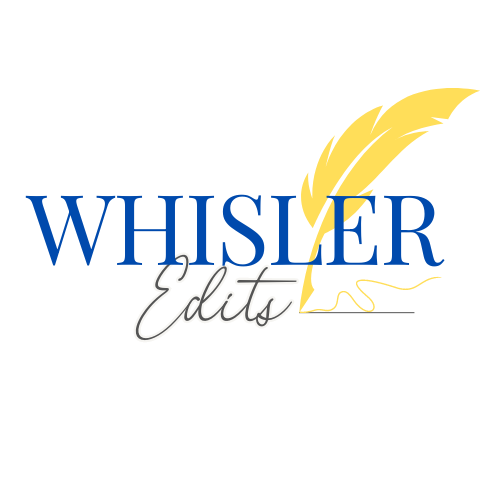Whisler Edits Blog

How to Use Flashbacks Effectively in Your Story
Discover in this post …
my thoughts on story content “rules.”
ways to determine whether a flashback is needed.
instances where you can replace flashbacks with alternative methods.
Rules, Schmules
The other day, one of my clients was concerned that the first section of his novel was out of proportion with the rest. He knew that I recommend the global inciting incident of a story (the big event that sets the main character on a new path) to occur somewhere around the 20% mark, and his inciting incident happened well before that.
I talked through his story with him, and I asked him the only question that matters:
“Will your readers feel that your beginning is rushed? Will they have time to get to know your main character and attach emotionally, or are you missing out on a vital opportunity to build that all-important connection between characters and readers?”
In my client’s case, he felt that he had accomplished those items in less time than it typically takes, but they were present regardless, so for him and his target readers, it wasn’t necessarily going to be an issue.
This brings up two important concepts that I always like to convey to writers:

If you hear someone talk about story content “rules,” consider referring to them in your mind as “guidelines” instead.
Every guideline that has ever existed in the writing world has been established for a reason. And when we take a closer look at the reason, taking into account our personal writing goals, it helps us understand whether it makes sense for us to follow the advice, disregard it, or “follow” it in our own creative (and perhaps unconventional) way.
Today, I’m going to share several guidelines with you that relate to when and how to use story flashbacks. If your goal as a writer is to create maximum emotional impact for readers anytime you use a flashback, you’re in the right place.
What's a Flashback?
In terms of story, Merriam Webster defines a flashback as an “interruption of chronological sequence by interjection of events of earlier occurrence.”
In other words, it’s a moment within your story in which you create a mini-scene or piece of a scene around something that happened prior, and you reveal it as if it’s happening in the moment. (If it’s not revealed this way, it’s technically just a memory, a character reflecting on a situation rather than a flashback.)
Think of the TV show Lost, where the writers chose to explore the backstories of the characters and portray bits of their former lives. In each episode, viewers learned more about who the characters were before they crashed onto the island.

Sometimes it really helped to know those characters’ backstories because it deepened the connection viewers felt with certain characters, or it shed light on something happening in the present. Other times, viewers weren’t happy with the way the flashbacks slowed down the story.
So how do you know when it’s a good idea to use a flashback in your story and when it would be better to go without?
Let’s look into that together. Below, you’ll find my top guidelines that will help you decide whether your flashback will add to your work in progress or take away from it.
When to Use Flashbacks
GUIDELINE 1: Your flashback should have a clear impact on the present story.
This is the most important point I can make about flashbacks.
If you’re striving to tell a powerful story that appeals to readers’ emotions, it doesn’t matter how artfully you write your flashback or how beautiful your language comes across.
If your flashback doesn’t seem to affect the current storyline, readers will (consciously or subconsciously) question why you included it. They might even be annoyed without realizing exactly why.
As an example, let’s say your protagonist had a horrible childhood, and you’d like to include one of their worst moments on the page. They were five years old and left abandoned at an old mall.
You might think to yourself, This is good stuff. Readers are going to be heartbroken over my character’s rough childhood—and that’s exactly where I want them to be.
If your flashback connects with the modern-day story and provides clear insights into why your character is acting a certain way or making a specific decision, you might be fine. Readers will make the connection and understand why you included the flashback. It will help them make sense of your protagonist.
On the other hand, if the flashback appears random to readers and they can’t decipher why you included it, you’re in danger of losing reader trust.

GUIDELINE 2: Your flashback should shed light on something important and new, something readers weren’t aware of until this point in your story.
The word “important” is key here. As the writer, you probably have stacks of notes about each of your characters—but just because you know a great deal of information does not mean readers need to know it all too.
If you think a certain character’s backstory is interesting, great! Ask yourself, Do readers need to know this in order to understand the story, or am I including this simply because I worked hard on this backstory and don’t want to waste it?
GUIDELINE 3: Flashbacks can be appropriate and effective in the case of unconventional timelines.
If you’re writing a story in which the past and present are equally important and clearly relate to each other, half your story might come across as a flashback. Writers of mystery and suspense often use this technique, and it can be a powerful one, but only if suspense is present in both sections of the story. You want to capture your readers’ attention throughout the entire book, not have readers slowing down (or worse, skipping pages!) during one section of your story so that they can get back to the “good part.”
When to Avoid Flashbacks
GUIDELINE 1: Avoid flashbacks when you’re only using them because you can’t think of another way to convey information about a character.
Our writer’s brain likes to feed us interesting ideas that aren’t necessarily true. One of these lies is “There’s no other way to incorporate this exposition than to add a quick flashback. That way, readers will understand the whole picture.”
If this is you, I challenge you to expand your realm of possibility by jotting down all the different ways you can incorporate a character’s backstory.
“But I just told you,” you might say, “that I only used the flashback because I couldn’t think of another way to get the information across. So how am I supposed to come up with more ideas?”
Right. I get what you’re saying. But now I’m telling you that the reason you came up with only one idea is that you decided there was only one idea—just one possibility.
Now that I’m telling you there are more, convey that idea to your brain and watch as it creates additional possibilities, such as internal thoughts, external dialogue, and subtext. Each can deliver background to readers in place of a flashback.
GUIDELINE 2: Avoid lengthy flashbacks.
Unless you’re using an unconventional timeline (as described in Guideline 3 in the section above), keep your flashback concise so that the impact is clear and powerful. If you draw out a flashback, it can easily distract from the main plot.
GUIDELINE 3: Avoid overusing flashbacks.
Even if all your flashbacks serve a strong purpose and shed light on something interesting about your present-day character, ask yourself where you’d like to place the focus of your story. Do you want to emphasize the past and present equally, as explained in Guideline 3 in the section above? Or do you want readers to focus on the present story? If the latter, you’ll want to avoid using flashbacks too often. Overusing them only makes your story lag and slows readers down.
Bonus Test
I know someone who doesn’t believe in using flashbacks at all. He thinks everything should take place in the present in your story to keep it tight and the pacing on point. Although I wouldn’t go to that extreme, if you’re still debating whether your flashback is necessary after reading the above items, I encourage you to conduct this “bonus test”:
If in doubt, take it out.

Then see how your story reads without it. If removing it has a negative impact on readers’ understanding of your plot or characters, you might want to keep it. But if taking it out gives you a clear idea of how to integrate a few key details without the full flashback, so much the better.
Summing Up
As a reminder, when you’re deciding whether or not to use a flashback, consider the following:
Flashback Do’s:
Your flashback should have a clear impact on the present story.
Your flashback should shed light on something important and new, something readers weren’t aware of until this point in your story.
Flashbacks can be appropriate and effective in the case of unconventional timelines.
Flashback Don’ts:
Avoid flashbacks when you’re only using them because you can’t think of another way to convey information about a character.
Avoid lengthy flashbacks.
Avoid overusing flashbacks.
Did today’s post help you decide whether or not you should use flashbacks in your work in progress? Did it bring up any items you’d never considered before? What’s your own opinion on flashbacks? I’d love for you to email me and let me know at [email protected]. Here’s to a productive writing week ahead!
Do you want to learn how to write a story that makes your target readers stand up and cheer? If you’d like support from A to Z (from brainstorming to drafting to revising to publication), book a Discovery Call with me to see if you’re a good fit to join my book coaching program, Fantasy Footsteps: Road to Publication. And if you haven’t done so already, grab your Free Guide on how to hook readers from your story’s start!

